- Administrator
- Albums and Singles

This stripped-down 20-minute EP captures Blackshaw back near the top of his game, finding the perfect synergy between his talents as a steel-string virtuoso and his ambitions as a more varied composer.  While the overall feeling of these two pieces is languorous, melancholy, and impressionistic, the crisp sound and complex and inventive arrangements imbue them with a surprising amount of dazzle and immediacy.  James makes a virtue of brevity, as Holly is a complete, undiluted, and consistently strong effort.
In some regards, Holly is very much a return to Blackshaw's roots, as his acoustic guitar playing again takes center stage.  Also, it is very nearly an entirely solo affair, enlisting only multi-instrumentalist/All is Falling alum Charlotte Glasson to fill out the sound. Despite that, these two pieces have little in common with the Eastern-tinged American steel-string folkies that inspired James' earliest work.  Instead, Holly fits comfortably (not regressively) into Blackshaw's career arc, feeling very much like a neo-classical guitar album– Blackshaw even plays nylon string here for the first time.
Fortunately, close similarities to Julian Bream and John Williams fall by the wayside once James picks up enough momentum.  "Holly," for example, begins with a deceptively somber twelve-string guitar motif before quickly spiraling off into an roiling web of lightning nylon string arpeggios and descending piano chords.  I was especially struck by the way the incredibly fast and complicated fingerpicking is counterbalanced by the rather languid piano and violin themes– it gives the piece an unusual sense of motion and urgency.  While certain passages in "Holly" are quite beautiful compositionally, the main attraction for me lies in the blindingly dexterous and multilayered cascade of notes employed to unfold the piece's simple melodies.  This is essentially a mesmerizing performance that also happens to be a good song.
"Boo, Forever" is a bit less awe-inspiring technique-wise, but it is cut from roughly the same cloth and is no less enjoyable.  The key difference is that it is built around a few layers of 12-string steel guitars, which gives it an added crisp physicality.  Also, the melodic crescendos feature woodwinds rather than violins, but the general mood remains the same.  Exactly what that mood is, however, is somewhat difficult to put my finger on.  It is impossible to say how much the Christmas-connotations of "holly" have colored my judgment at this point, but I think these two pieces definitely evoke a cozy, huddled-near-a-fireplace-on-a-cold-winter-day feel that is quite appealing (even when co-mingled with muted sadness).  In fact, the worst thing that I can possibly say about this release is that it may err on the side of being too polite, but I can find room in my heart for "nice" things if they are well-executed.  While it doesn't quite reach the heights of some of Blackshaw's individual pieces from the past, Holly is certainly an inspired detour (and a very solid one at that).
Samples:
 
Read More
- Administrator
- Albums and Singles
 Compared to the sprawling songs on their previous album 13 Blues for Thirteen Moons, Thee Silver Mt. Zion Memorial Orchestra have streamlined their songs as well as their name and their line up for this album (the band are now a far more manageable five piece compared to the larger ensembles of previous albums). Granted there are still a couple of monster-sized pieces here but there are a number of shorter, punchier songs to break them up. Kollaps Tradixionales shows this pared down Silver Mt. Zion in ferocious form, the stark beauty of their music reinforced with a renewed fire in their bellies. As usual, I am completely blown away by their music.
Compared to the sprawling songs on their previous album 13 Blues for Thirteen Moons, Thee Silver Mt. Zion Memorial Orchestra have streamlined their songs as well as their name and their line up for this album (the band are now a far more manageable five piece compared to the larger ensembles of previous albums). Granted there are still a couple of monster-sized pieces here but there are a number of shorter, punchier songs to break them up. Kollaps Tradixionales shows this pared down Silver Mt. Zion in ferocious form, the stark beauty of their music reinforced with a renewed fire in their bellies. As usual, I am completely blown away by their music.
“There is a Light” takes up the baton from tracks like “BlindBlindBlind,” its undulating form going from peacefully reserved to ecstatically charged; yes it is that loud/quiet/loud that has become a cliché in this post- Godspeed world but Silver Mt. Zion make it into something transcendental unlike lesser imitators like Explosions in the Sky of Mono (not to detract from those bands but really they are monochrome compared to the vivid color of SMZ’s music). Any accusations of sticking to a formula are well and truly dashed with “I Built Myself a Metal Bird,” which is the closest the band have come to pure unleashed rock. Even so, their use of unusual tempos and bawled-out vocals pushes themselves outside the realms of traditional rock. This is furious music delivered with all the restraint of war. Here new drummer David Payant proves his worth by stampeding through his kit.
The title track is not a track at all but three pieces named as variations on the album’s title that expand in completely different directions. Beginning with the gentle “Collapse Traditional (For Darling)” and moving to the explosive “Kollaps Tradicional (Bury 3 Dynamos),” Silver Mt. Zion show all their various faces and in three pieces sum up everything they represent: fear, hope, anger and passion. By the time the final piece, "'Piphany Rambler," arrives, this album has taken its toll. Not to suggest by any means it is difficult but the levels of energy I expel listening by singing along, getting worked up and calming down again makes for a tiring and utterly worthwhile hour of my life.
A review of a Constellation album is never complete without mentioning its presentation. Kollaps Tradixionales is another fantastic addition to the label’s design portfolio, the vinyl version comes with beautiful posters and a book of found images (made in collaboration with film maker Jem Cohen who has worked with the band along with Vic Chesnutt in the past). To top things off, as with some of their other recent albums Constellation also include a CD copy of the album for those times when vinyl is not an option. This nice gesture is a far better than the recent trend of including a download coupon as I find that these downloads end up sitting on a hard drive rather than being played. At least the CD has received plenty of spins in the car so far. Thanks Constellation!
samples:
- I Built Myself a Metal Bird
- Kollapz Tradixional (Thee Olde Dirty Flag)
- Kollaps Tradicional (Bury 3 Dynamos)
Read More
- Administrator
- Albums and Singles
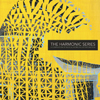 The anchoring of western music to equal temperament has on one hand lead to many musical developments but on the other hand, there is a whole world of musical textures and approaches to composition lost to instruments that are stuck playing in chromatic scales. On this excellent compilation, several artists explore intonation from a number of different approachesm utilizing a range of instruments. Ranging from almost ambient soundworks to difficult conceptual pieces, The Harmonic Series is an expansive anthology of unusual and beautiful music.
The anchoring of western music to equal temperament has on one hand lead to many musical developments but on the other hand, there is a whole world of musical textures and approaches to composition lost to instruments that are stuck playing in chromatic scales. On this excellent compilation, several artists explore intonation from a number of different approachesm utilizing a range of instruments. Ranging from almost ambient soundworks to difficult conceptual pieces, The Harmonic Series is an expansive anthology of unusual and beautiful music.
The idea of intonation alone is not a new one but it is a particularly apt type of tuning that fits with the technological and cultural movements of the 20th century. The mathematical side of just intonation and its reliance on whole number ratios sits comfortably beside ideas like quantum mechanics and the development of computer technology. Additionally, there is a feeling of otherness about pieces performed in intonation; the interaction between the notes sounding alien compared to the expected sounds that a modern ear conditioned to equal temperament. Michael Harrison’s “Tone Cloud II” transforms the familiar sound of a piano into a metallic shimmer, the interference from the different notes forming an uncertain backdrop to the relatively straightforward arrangement. Played on a piano tuned in a standard way, this would be a nice but inoffensive piece but Harrison allows the alternate tuning to give the music a hue that it would otherwise be lacking.
On “The Beauty of Sorrow” Pauline Oliveros shows a different side to intonation which accentuates its more musical side; the “wrong” feeling of the tuning negated by her sombre composition. Taking this “wrongness” and revelling in it, Charles Curtis’ “Stanzas Set Before a Blank Surface” is a difficult piece compared to the others included in The Harmonic Series. Harmonic intervals are combined with intervals of silence and all conventional musical forms are eschewed in preference of a total “sound for the sake of sound” approach. Curtis presents different blocks of sound, revelling in the overtones produced by his actions. It is the kind of piece where deep listening provides a profound and rewarding experience that will alienate your friends disinclined towards experimental music.
Although the notes accompanying Greg Davis’ “Star Primes (for James Tenney)” read more like readouts from an astrophysics experiment, the end result is a blissful drone piece which is beautiful but fails to exploit the use of intonation alone. The piece could be any electronic drone in any tuning as it does not seem (to these ears anyway) to capture the same rich oddness of the other pieces. Yet this is just nitpicking because at the end of the day because much like all of Davis’ work, the drone is immensely satisfying and whether my ears can detect it or not, the piece fully fits within the remit of the compilation.
Overall The Harmonic Series is one of those great compilations where everything comes together: the concept, the selection of artists and the final flow of the album. Additionally,The Harmonic Series also comes with comprehensive sleeve notes covering both the theory behind intonation in general and individual essays on each piece included on the compilation. Short of including some La Monte Young on it, I cannot think of how this album could be bettered.
samples:
- Michael Harrison, "Tone Cloud (For James Tenney)"
- Pauline Oliveros, "The Beauty of Sorrow"
- Charles Curtis, "Stanzas Set Before a Blank Surface"
Read More
- Administrator
- Albums and Singles
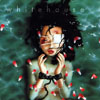 In the canon of Whitehouse, this is an odd release. It lacks the unabashed brutality of the early releases, the monotone sex-crazed sounds of the mid period, and is far more restrained than anything that has been released since. I think for that reason this has become, at least for me, their lost classic. Not lacking the caustic, angry vocals and genuinely disturbing moments of their discography, the other component is a very nuanced study of electronic textures, and an oh-so-subtle sense of humor and irony that really holds it all together.
In the canon of Whitehouse, this is an odd release. It lacks the unabashed brutality of the early releases, the monotone sex-crazed sounds of the mid period, and is far more restrained than anything that has been released since. I think for that reason this has become, at least for me, their lost classic. Not lacking the caustic, angry vocals and genuinely disturbing moments of their discography, the other component is a very nuanced study of electronic textures, and an oh-so-subtle sense of humor and irony that really holds it all together.
Whitehouse was a band that, in my early days of being in the "noise" scene, I intentionally went out of my way to avoid. They seemed to represent too many of the stereotypes that pervaded, i.e., serial killer worship, misogyny, sex obsession, etc. Once I was actually exposed to them via a mix tape ("Just Like A Cunt," from this album), my opinion shifted. Granted, those themes were still present, but the presentation was one different than I had anticipated. The track just simply clicked…sure, I by no means was a supporter of the lyrical content, but the way it was delivered was just undeniable. But we’ll return to that later.
The band has always been focused on the darker side of society, but the previous releases stuck to a regular formula: up until about the release of Right to Kill, every album was shrill EDP Wasp noise, feedback, and William Bennett’s manically shrieked, but undecipherable, vocals. At the mid-point of their career, they stripped the noise back some and allowed the vocals to be heard. The most notorious of these albums, Great White Death, conjures images of loitering around seedy bookstores on the "bad" side of town, with sticky floored peep shows in the back and publications of questionable legality being carried out in non-descript paper bags. The vocals became the center point here, and the noise became more of a backing rather than a focus. Up through the Bret Easton Ellis obsessed Never Forget Death and the reverb drenched Halogen, the color changed from one of overt aggression and violence to a restrained menace.
The latter’s title track and the short closer "The Way It Will Be" were, at least to me, much more unsettling than anything off of their previous work. The combination of Peter Sotos' misanthropic texts, Bennett’s buried vocals, and extremely heavy reverb gave a sense of cold menace rather than sex crazed aggression. Quality Time kept the vibe, but pulled away the reverb and effects, leaving behind a slew of bizarrely organic textures, the origin of which I am still not sure of, but is the product of one of the last major Whitehouse and Steve Albini collaborations.
The album opens with "Told," a slow burning track of carefully controlled feedback and boiling analog textures. Bennett’s vocals enter, first calm and then disgusted, eventually becoming maniacal and shrieked, chastising and taunting a non-existent sex worker. Structurally, the track is one of the most musical bits of noise recorded. For a genre (and band) criticized for being nothing but formless chaos, there is a very song-like progression in both the backing sound and the vocals.
The longer title track that follows beings with the same alien sense of sonic disconnect, unfamiliar textures that grind away as the vocals shriek alongside. The same restrained feedback textures of "Told" with a raw, nauseous analog clicking acting as rhythm to the shrill noise’s melody. Lyrically a combination of Peter Sotos’ filth and a porn director pushing an actress to do a little more than she’s willing to creates an unsettling atmosphere to say the least, and Bennett’s clipped, overly affected vocals only add to the sense of discomfort. The dynamic level actually stays rather close to ambient territory, with only the vocals pushing everything into abrasive pastures. As an instrumental it’d be a slow sparse study of unnatural analog textures.
At the mid-point of this album is perhaps the most bizarre and uncomfortable pieces of sound anyone has ever committed to record, and it may simply be an example of context more than content. "Baby" is, ostensibly, just a recording of a baby playing in the bathtub with some nearly inaudible subsonic synthesizer noise. The standard child babbling and noises are there with really no processing. The voice of the child does sound like it may have a bit of effects placed on it, but otherwise it stays rather untouched. Other than the minor effects and multitracking to the voice, there’s nothing sinister at all here, but placed into the context of a Whitehouse album, and this particular Whitehouse album at that, it is extremely uncomfortable to hear. Sitting right in the middle of the album is "Execution," five minutes of unadulterated synth noise that, other than the undulating chugging rhythmic elements, sounds more like the Incapacitants or other highly regarded Japanese artists than anything usually labeled "power electronics." It bears more than a passing resemblance to the earlier Whitehouse albums, so perhaps it is a bit of nostalgia more than anything else.
"Just Like A Cunt," here the Philip Best version, is perhaps the track that shows what Whitehouse evolved into for their most recent releases. Sonically it is a simplistic track: the backing sounds like a broken alarm clock and boiling water, but the centerpiece is the vocals. Philip Best delivers the lyrics with a venom that I have never heard anywhere else, snarling and screaming the misogynist lyrics like someone moments before a murder. Rather than Bennett’s penchant for going into unhinged shrieks and screams, Best keeps his anger focused and directed. The untreated and coherent vocals became the focus once the acclaimed Cruise was released some years later. For anyone who takes the lyrics at face value, it should be noted that much of them are appropriated from Bob Dylan’s "Just Like a Woman," with a few words substituted, placing it more as a parody or character study than a truly spirited piece of woman-bashing. There also exists a take of this track with William Bennett’s lead vocals, but given their bizarre tone and delivery, along with its limited release (on a one track Japanese 3” single only), I’ve always considered to be more of a joke at the fan’s expense than anything else.
The closing "Once and for All" is the culmination of all of the restraint shown from the prior tracks: white noise, shrill squeals, and Bennett’s entirely undecipherable vocals, with almost everything other than the title sounding like the self-directed rantings of someone in a mental institution. While Halogen ended with the quiet reflection of "The Way it Will Be," restraint is thrown out the window here, and the manic fury of the track heralds the intensity that would follow two years later on the fully digital Mummy and Daddy.
Whitehouse were always, and continue to be a polarizing force in electronic music. There are many who despise them for their subject matter, others who embrace them for the same thing, and those such as myself who take none of it at face value but instead look at it as a merely a study of dark and unpopular topics. In the Whitehouse canon, this one is overlooked for the likes of New Britain (for it’s pure sonic brutality), Great White Death (for its prurience) or Cruise (for the vocal intensity), but it stands out on its own as an odd bit of synth textures and lyrics that unsurprisingly delve into the darkest reaches of the human psyche. Regardless of one’s position on the lyrics, Quality Time is one of the albums that, with the vocals totally removed, would still stand strongly on its own in the world of sound art. The electronic textures here are the star, and the vocals just add an even more tangible darkness to the one the music creates on its own.
samples:
Read More
- Administrator
- Albums and Singles
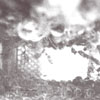 Consisting of two distinct conceptual pieces spread across a total of four tracks, La Casa creates sound based upon the disparate concepts of both nature and urban sprawl, utilizing field recordings in each case both in their untouched and heavily treated states. The complex result is simultaneously warm and inviting, yet cold and detached, exactly as the source material would lead one to expect.
Consisting of two distinct conceptual pieces spread across a total of four tracks, La Casa creates sound based upon the disparate concepts of both nature and urban sprawl, utilizing field recordings in each case both in their untouched and heavily treated states. The complex result is simultaneously warm and inviting, yet cold and detached, exactly as the source material would lead one to expect.
The opening piece, "Zone Sensible 2," is nearly a half hour of recordings based on beehives near Paris. The opening moments of the piece are unsurprising: the expected buzzes and hums of bees are present and grow in complexity, either as La Casa began to record closer to the hive, or via multi-track recording. Once the swarm arrives at the full level of intensity, it suddenly drops off via processing to near nothing, leaving only the most fragmented of sounds crackling away, the bees reappear again heavily under the influence of signal processing, covering everything in a shiny digital static sheen. The high frequency static coalesces with deep, undulating pulses before the untreated bees appear again, in concert with their digital counterparts. The processing brings out the pure tonal elements of the insects, creating warm tones light years away from the harsh textures of bee wings. The tones meld to create warm ambient electronic music, with insect interference coming in like static over radio transmissions. Eventually the bees take control, leaving the mix purely under the control of their wings before pulling away and allowing the subtle processed sounds to remain.
The remaining three tracks make up distinct segments of the "Dundee 2" piece, a collection of field recordings made around the city of Dundee, initially for use as a multitrack soundtrack to Ken Jacob’s "nervous magic lantern" film. The opening moments of the first piece are simply the clicking sounds of walking in an open parking garage. For me, this went from assumed to known the moment a booming voice cuts in, asking La Casa what he’s doing in the garage. The response, "I’m just recording space" is an honest one, but is still humorous to the befuddled guard, signaling a transition from the pure recordings to treated ones, leaving in bird songs over a low register hum and glitchy microsound delays shaped into a shrill rattle. Passages of echoing, open field sounds mix with the harmonic tones and digital stuttering, mixing both the natural world with the synthetic one.
The second segment is more forceful in its approach, with metallic rattling noises and heavy wind dominating the otherwise subtle sounds. Metal percussion like elements stick around, clashing against the otherwise complex subtlety, the heady mix ends with a surprising pastiche of church organ. The final segment goes even farther, with dense industrial clanging covering the bulk of the mix, with only the occasional voice from a field recording giving a human element to an otherwise mechanical track. The final two thirds retreat to a pensive ambience that contrasts the earlier intense noise.
While this disc joins two very different pieces, the fact that the two come from entirely different sound sources is irrelevant. La Casa utilizes the tonal qualities of both to conceptually highlight the inherent themes, but his adept hand at structure and composition gives them a coherent quality that both act as a microcosmic study of nature and society, but also a sonically compelling album that would stand high even without any sort of theme present.
samples:
Read More
- Administrator
- Albums and Singles
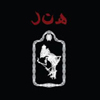 The title of this album alludes to a deeply macabre and scatological Indonesian myth about young girl who possessed the dubious magical ability to defecate surprising items ranging from earrings to knives to...well...gongs. When she distributed these items to men at a village dance, the villagers collectively decided that her power was an infernal and unseemly one and that they needed to bury her alive. Fortunately, the story has a happy (albeit grisly) ending, as her friend later dug up her corpse, dismembered it, and reburied its parts all over the village, which caused delicious tuberous plants to grow.
The title of this album alludes to a deeply macabre and scatological Indonesian myth about young girl who possessed the dubious magical ability to defecate surprising items ranging from earrings to knives to...well...gongs. When she distributed these items to men at a village dance, the villagers collectively decided that her power was an infernal and unseemly one and that they needed to bury her alive. Fortunately, the story has a happy (albeit grisly) ending, as her friend later dug up her corpse, dismembered it, and reburied its parts all over the village, which caused delicious tuberous plants to grow.
I am not sure quite what moral I should take away from this tale, as it seems to make a strong case for digging up and disfiguring corpses, but frowns upon public defecation. Regardless, the timeless, bizarre, and shadowy music of The Glorious Gongs of Hainuwele certainly approximates the sort of music that might’ve been playing at just such a memorable dance.
Syed Kamran Ali (one-third of The Hunter Gracchus) is one of the key figures in Sheffield’s recent resurgence in underground music prominence, a small but thriving scene centered around a disused factory and the Singing Knives label. On this, his solo debut, he performs an ingenious inversion of the Muslimgauze formula, appropriating exotic field recordings in order to create even more exotic (and imaginary) field recordings of his own.
Some material seems likely to have been culled from Africa and The Middle East, but Ali could just as easily have limited himself solely to the thematically appropriate region of Southeast Asia. Much more important than the origin of the base material is what Syed does with it. Actually, what he doesn’t do with it might be more important still: these songs sound completely raw, unpolished, and devoid of any conspicuous contemporary music influence. If anything, Ali seems to have artificially eroded, distressed, and overloaded his loops to make them sound even worse, though he clearly took cautions to avoid completely rendering the instruments unidentifiable. As a result, the music captured here sounds ancient and forgotten, very much akin to Nonesuch’s Explorer series, which documented everything from folk dances to voodoo rituals. The key difference, of course, is that the culture that Ali is documenting exists only in his head.
Syed covers a lot of stylistic and emotional territory here, which is what elevates the album from a cool idea or clever intellectual exercise into something truly unique and mesmerizing. For example, the ruined strings of “Mal De Ojo” and “Scarecrow” are haunting and heartbreaking to a degree that can only be achieved by a time-ravaged tape reel, while other tracks (like “Lila Derdeba") can be quite raucous and heavily rhythmic. There are also some moments that sound like a waterlogged tape of Tom Waits at his lurching, junkyard-percussion best, yet all these disparate threads somehow manage to fit seamlessly alongside flourishes of deranged and harsh experimentalism. Throughout it all, Ali displays an innate genius for keeping things hooky, hypnotic, and unwaveringly human. An experiment like this one is an easy one to ruin with too much tinkering, self-indulgence, repetition, and clutter, but Syed has managed to sidestep every peril to egolessly let the recontextualized loops lead him into strange and wonderful new territory.
Samples:
Read More
- Administrator
- Albums and Singles
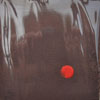 Aranos’s new long-form opus may be a bit lacking in his characteristic eccentricity, but it maintains his usual high standards of adventurousness, difficulty, and oblique conceptuality. While ostensibly a drone piece, the tone is much less meditative than I expected. Instead, Crow Eye Hint is a nakedly experimental and exploratory work for much of its duration, focusing on both negative space and the acoustic properties of misused pianos and clashing tones. Also, it gets pretty scary.
Aranos’s new long-form opus may be a bit lacking in his characteristic eccentricity, but it maintains his usual high standards of adventurousness, difficulty, and oblique conceptuality. While ostensibly a drone piece, the tone is much less meditative than I expected. Instead, Crow Eye Hint is a nakedly experimental and exploratory work for much of its duration, focusing on both negative space and the acoustic properties of misused pianos and clashing tones. Also, it gets pretty scary.
Crow Eye Hint is definitely an album that requires headphones or extreme volume to be fully appreciated. The main reason for this is the subtlety of its lengthy opening, which just sounds like sporadic, arrhythmic whooshing and creaking noises when listened to casually. Deeper focus reveals that those whooshes are merely the attack of notes that have been reversed (the tip of the iceberg, so to speak). Much quieter, but much more engrossing, is the murky hum and dynamic swelling of the notes’ backwards decay as Aranos calmly plucks and manipulates the piano wire.
Perhaps sensing that the piece was in grave danger of succeeding as an ambient work, Aranos impishly detonates the reverie after a few minutes with a brief and violent flurry of discordant, conventionally played notes. The microcosmically waxing sound world returns yet again, but with a looming sense of disquiet, as it is now clear that another explosion of dissonance is likely to occur without warning. It doesn’t happen immediately though, and the swelling reversed notes gradually increase in tension and power as Aranos increases the volume and puts the piano’s sustain pedal to work. The effect is quite a visceral one, as the rumbling bass notes begin as a diffuse thrum beneath a nimbus of treated flaps and flutters, but slowly snowball and cohere before roaring and tearing into the aural foreground. After about ten minutes, the long-awaited jarring flurry of notes finally hits once again, but is a little tamer this time and carries with it an entirely new direction.
At this point, Aranos begins playing the piano with the actual keys, but things remain far from conventional. Using the sustain pedal and a single rapidly played note, he creates a woozy, quavering shimmer that he buffets with various amplified thumps and an insistently repeating, oddly chosen tone. Glacially, the tremulous underlying drone increases steadily in depth and density while remaining melodically static until abruptly opening up into a lush, string-enhanced pastoral vista.
The second half of this 54-minute work remains relatively entrenched in that droning vein, which is slightly more listener friendly than that which preceded it. At the very least, it achieves and maintains a distinct flow. However, the placid atmosphere dissipates pretty quickly, as the pulse intensifies and the violins begin to grow more nightmarish and discordant. The piece ultimately becomes quite a harrowing and grotesque caricature of the fleeting oasis of bliss that earlier emerged as its center. That tense and disturbing atmosphere, however, eventually gives way to an eerily throbbing and moaning denouement before finally concluding, appropriately enough, on the surge of a single backwards note.
Crow Eye Hint is a very nuanced, engrossing, and intriguingly structured work and probably one of the best things that I have heard from Aranos. It certainly took me some time and effort to fully absorb and embrace this album, but it was well worth it once I did. Perhaps cognizant of the demanding nature and delayed gratification inherent in such a piece, Aranos has made the album available as a free download for more trepidatious listeners, but the handmade wood, canvas, and woodcut packaging of the actual CD is an endearingly personal touch.
Samples:
Read More
- Administrator
- Albums and Singles
 Recorded throughout the '90s and released in 1998 by Robot Records, the first proper album from The Aeolian String Ensemble is something of a mystery. Though it is attributed primarily to the work of David Kenny, the liner notes for Lassithi/Elysium also mention names like David Tibet and Steven Stapleton. Both songs bear out comparisons to music by either one, but the Ensemble's especially light touch and new age flourishes are entirely unique to them.
Recorded throughout the '90s and released in 1998 by Robot Records, the first proper album from The Aeolian String Ensemble is something of a mystery. Though it is attributed primarily to the work of David Kenny, the liner notes for Lassithi/Elysium also mention names like David Tibet and Steven Stapleton. Both songs bear out comparisons to music by either one, but the Ensemble's especially light touch and new age flourishes are entirely unique to them.
Hushed tonal breathing and intimated melody are the two primary ingredients used in "Lassithi," the album's opening and central song. It's a leviathan of a recording in more ways than one. At nearly 60 minutes long it is something of a challenge from the outset, and its contents only reinforce its nearly impenetrable depths. The sole instrument used for its composition is the aeolian harp. Composed of a small wooden box, a resonator, and strings, the aeolian harp could produce harmonic overtones by virtue of the wind. Meant to be left in an open window or outside where the breeze could catch its strings, the aeolian harp was not intended for human manipulation, nor was it intended for use in any kind of traditional composition. A quick Youtube search reveals a number of outdoor installations or sound exhibits that sound a little bit like what is found on this record, only Kenny's music reaches for far deeper tones than anything I can find on the Internet.
Some subtle plucking and electronic manipulation allow Kenny to do much more with his instrument of choice. Of course, low end rumblings and indistinct noise play a large role in both "Lassithi" and "Elysium," but there are hints of melody throughout the record, and in some places there are phrases that my mind tells me must have come from a synthesizer. Try and imagine Tangerine Dream's early records filtered through Andrew Chalk's brain; every movement is an organic or wave-like one, but there's enough harmony and echoed rhythm to keep everything from dissolving into a messy soup. "Elysium" stands in defiance of the new age classification I have given the album as Kenny employs a sequence of far darker and more sinister sounds throughout it. Here the strings are vibrated to the point of distortion; either post- production techniques or David's method of playing the harp render the texture of the strings more obvious (think of dragging a penny across nickel-plated guitar strings). In addition, there are further keyboard-like passages and recognizable chords employed, which make the song sound more rigid and imposing than "Lassithi." Had I not been told otherwise, I would have assumed electric guitar and some manner of synthesizer were used to record at least this song, if not both of them.
At over 70 minutes long, Lassithi/Elysium is imposing, but easier to digest than many other records of its kind. Its length implies that it is to be listened to in a way different from other music, but its content is so alluring that it demands rapt attention. However they are heard, both songs are beautiful and nuanced recordings that I place alongside favorites like Coleclough and Chalk's Sumac or Potter and Bradley's Behind Your Very Eyes.
samples:
Read More
- Matthew Spencer
- Albums and Singles
With such a diverse and long history of musical collaboration, it's easy to see Forkner's music through his work as sideman, producer, and general hired gun. That's unfortunate since he deserves more scrutiny than tags like "worked with… " or "ex-member of…" elicit. That said, Prism Of Eternal Now does fall comfortably into the spaced-out ambient rock of his previous bands, especially Yume Bitsu and Surface of Eceyon. That doesn't mean he's trying to replicate the success of past projects, only that he has always imbued an individual aesthetic sense into almost everything he records.
Forkner plays all the instruments on this album. Given the capabilities of digital multi-tracking, it is not much of an achievement in itself, but the full arrangements and skillful playing here reveal his talents as a multi-instrumentalist. Tabala and water jug percussion propel "Pulses" and "Mystic Prism." Thick synth lines pin another rhythmic layer into the mix, anchoring the drifting sweeps of voice and computerized sound dust.
Live, Forkner's primary instrument is the guitar, but on the album it's somewhat of a nuisance. It wrecks "For Terry," an otherwise great song, by burying its better qualities in queasy noodling. Ironically, "Guitars" is the most pleasing example of the lot, being based on slow distorted rumbles instead of string bending theatrics.
As intrusive as the guitar playing is, it's a logical addition to the music. That bright, sustained guitar sound was a fixture on prog-rock and early ambient albums, though the effect here is more like Carlos Santana than Robert Fripp. More importantly, Forkner does not divorce modern psych music for its unfashionable roots. The hilarious liner-notes perfectly mimic advertisements for meditation aids and self help books. He clearly identifies himself with that aesthetic, putting himself in the strange position of a sincere ironist. But by embracing the New Age connotations of the music, he can play what he loves without the millstone of embarrassment.
Read More
- Matthew Spencer
- Albums and Singles
"Nikoman" has been kicking around in Gang Gang Dance's live repertoire for quite a while. Its Arabic keyboard scales, labyrinthine drumming, and dreamy breakdown are little too familiar to elicit surprise nowadays, but there is more urgency in the delivery. Singer Lizi Bougatsos chants the chorus in a Grime patois poles apart from her normal high pitched cooing. Normally, I would be suspicious of her intentions, but Gang Gang Dance avoids the minstrelsy common when white hipsters appropriate hip-hop culture. They have recently recorded a collaboration with MC Tinchy Stryder, so credit is due to them for actually engaging the rap community instead of just caricaturing it.
The instrumental "Oxygen Riddim Demo" is pleasant enough, but lacks the heft I expect from the band (no small feat considering they don't have a bass player). Nonetheless, the song serves as a good interlude and doesn't descend into the outright obnoxiousness some of the filler tracks had on earlier releases. The drum programming lacks a persistent low end, focusing attention on the interplay between guitar and keys. Alone, they can't fill out the arrangement completely, but given some heavy bass and a bit of vocals it could be a real club banger.
The closing track, "The Earthquake that Frees Prisoners," is an elegy to GGD's late bandmate Nathan Maddox, who was killed by lightning in 2002. Through archived recordings, he lends his voice in a monologue about visions he received on visiting Cairo, the Sphinx, and the Great Pyramids. Languid synthesizer washes and Bougatsos's sensuous vocals begin the track with an uneasy calm, abruptly broken by piercing screams and pounding, reverb-swamped drums . The tempo accelerates as flute samples and pulsing electronics lurch in and out of the mix. Maddox's musings become more agitated and surreal, fracturing into component syllables that skip and stutter under a digital knife. The track exudes a stoned paranoia as engaging as it is unsettling.
Read More
- Administrator
- Albums and Singles
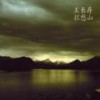 This is the first album from Wang Changcun, who is a member of the China Sound Unit, a group dedicated to investigating aural phenomena in various urban centers. Blurring the distinction between noise and the avant-garde, it also marks the first release of a Chinese composer by a Western label with international scope.
This is the first album from Wang Changcun, who is a member of the China Sound Unit, a group dedicated to investigating aural phenomena in various urban centers. Blurring the distinction between noise and the avant-garde, it also marks the first release of a Chinese composer by a Western label with international scope.
Of the two tracks on this disc, of more interest is the lengthy opener "Grand Hotel." In this 40-minute composition, Changcun relies on expansive texture to create an ever-shifting landscape. Opening with what could be recycled fragments of broken glass with swelling pitches swimming underneath, before long this gives way to a more mechanical-sounding hum accompanied by rising pitches. After a fade out and then a fade back in, a reptilian undertone fights various effects with whirrs and beeps. More waves of buzzing machinery linger before retreating, and it’s not unlike wandering through a sonic rainstorm, occasionally ducking for cover and at other times making a run for it. Halfway through the piece, a helicopter hovers overhead, yet its motive is unclear. Perhaps it’s a search party looking to rescue wanderers from the storm, or else belonging to some nefarious law enforcement group. Eventually the clouds fade and the sounds drip into puddles. The tranquility is soon shattered when a swarm of insects descends, in turn fed upon by bats that swoop through their repellent mists. Toward the end, the helicopter returns, but this time something is wrong as it groans and stutters, misfires, and for the first time the song comes close to having something like beats. All that’s left at the end is a minimalistic rippling rhythm, with none of the atmospheric noise that permeates the rest of the song. It’s a fine piece, if not terribly different from others like it, but certainly enjoyable.
A little more puzzling is the second song, "King of Image 1995," which is a field recording Changcun taped from a VHS cassette of a man’s funeral attended by singing nuns. As much as I like the music, I’m a little confused as to its inclusion here since Changcun’s manipulations of the source are quite subtle. It might be a little more effective in a different, perhaps documentary, context. Yet as a window into these lives, the track isn’t without its merits.
This album may not be groundbreaking, but it certainly highlights the fact that there is a lot of underground Chinese music yet to be exposed to Western listeners. If Changcun’s work is any indication of its quality, then I’m all ears.
samples:
Read More

